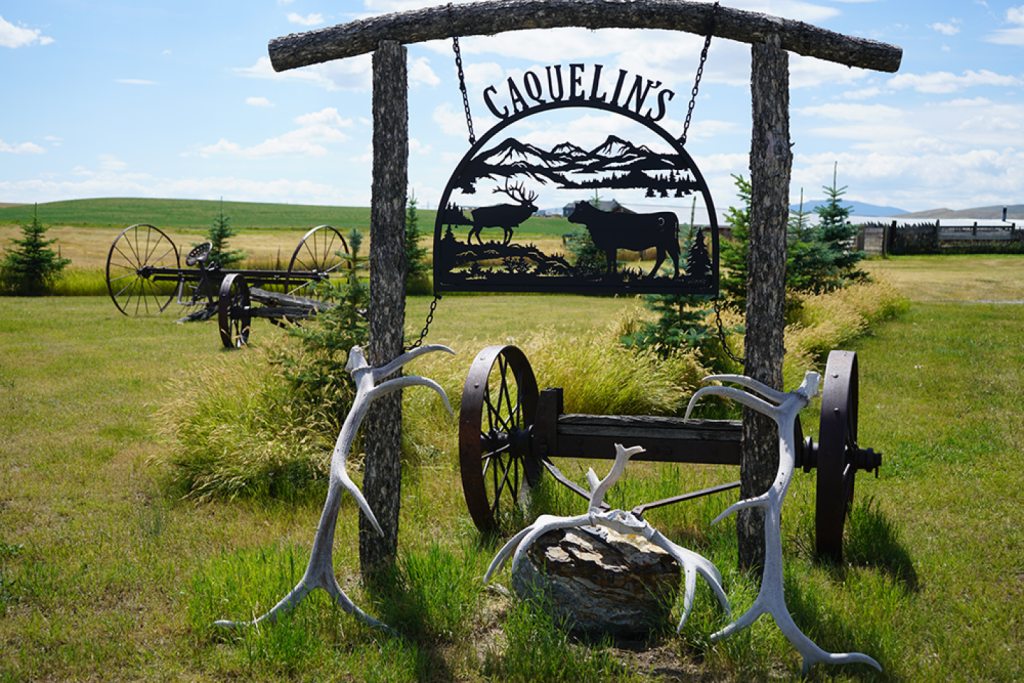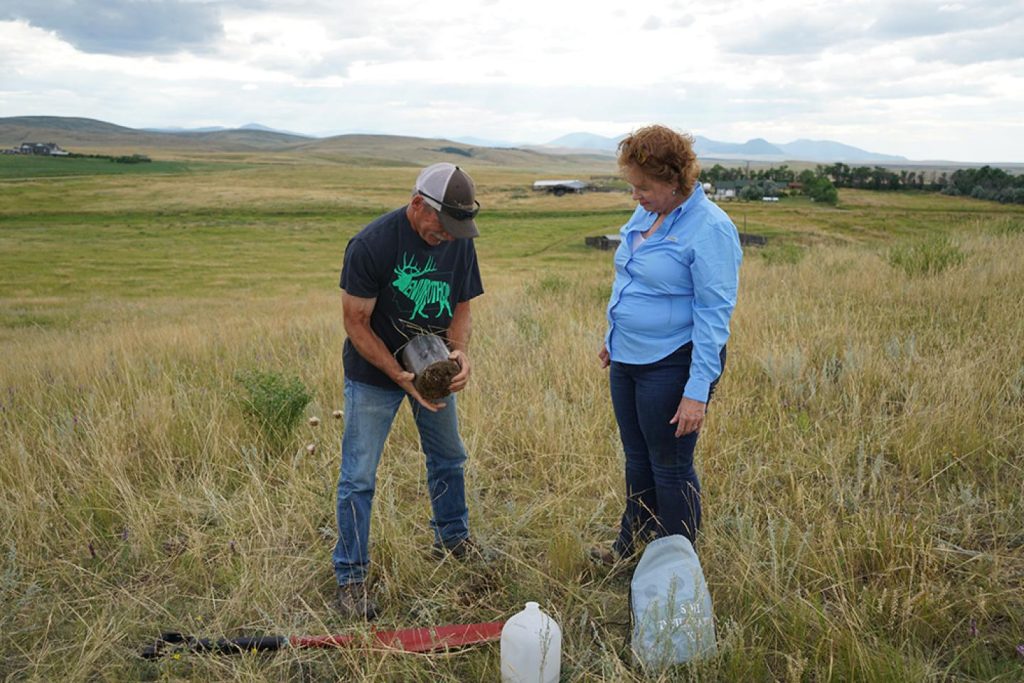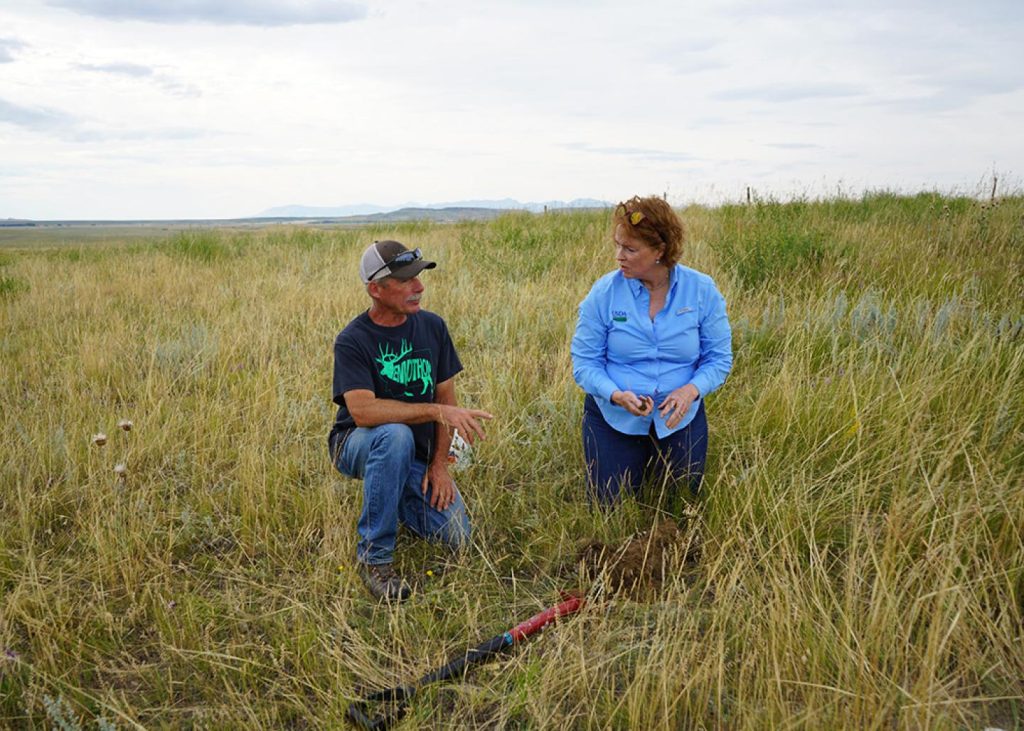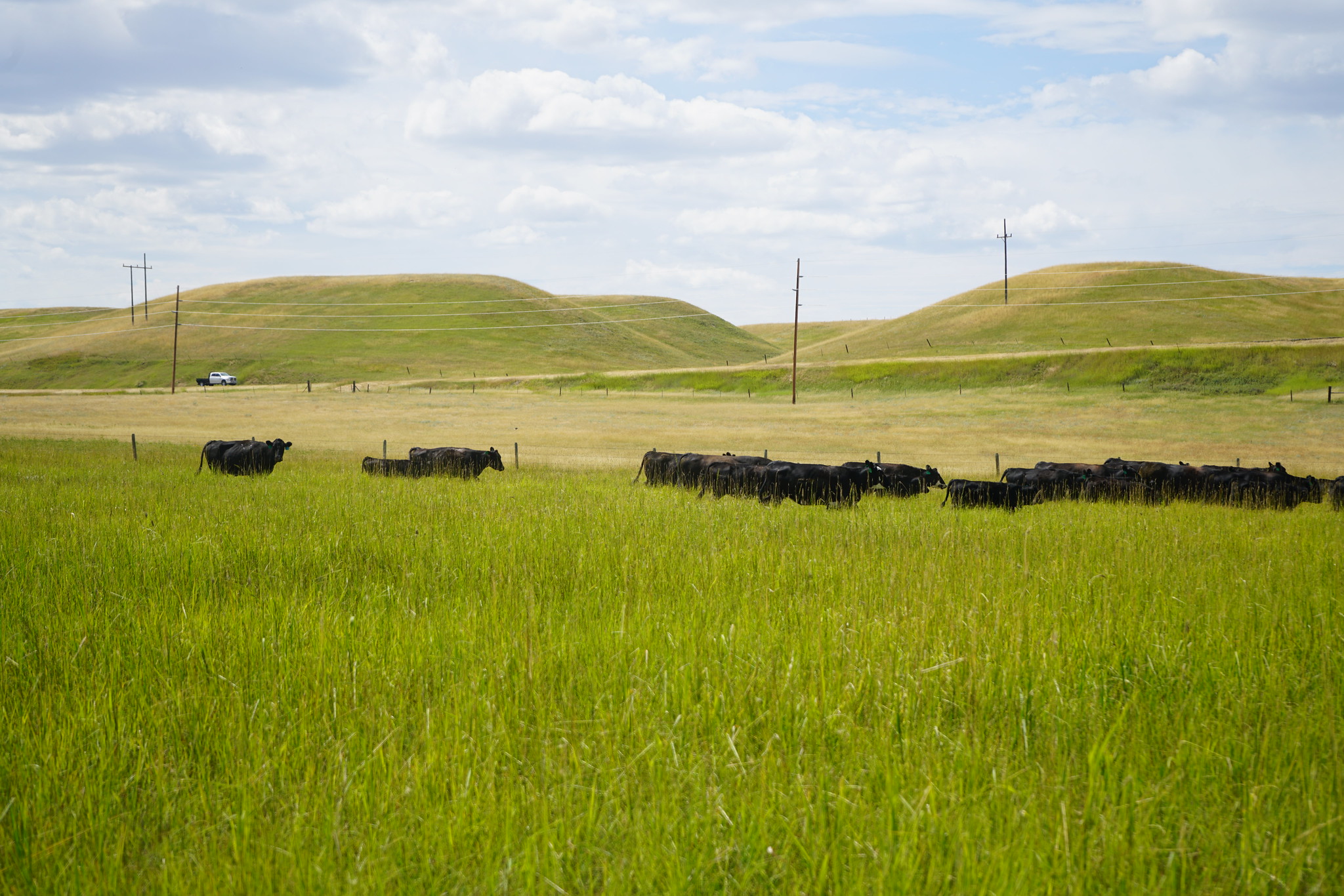Rick Caquelin is using the knowledge he’s acquired from his three decades of working at the Natural Resource Conservation Service (NRCS), on his own ranch to improve his soil’s health.

In the quiet town of Stanford, Montana, grassy plains spread out to the surrounding mountains where Rick Caquelin has embraced full-time ranching post-retirement. For over three decades, Caquelin worked for the USDA Natural Resources Conservation Service (NRCS), assisting ranchers and farmers across the state in improving land management.
“Without NRCS, I would have still ended up here, but I would have never gained the knowledge on how to do it or have been as successful,” says Caquelin.
Early Interest in Agriculture
Caquelin first learned about the NRCS when he was a child. The agency came out to his family’s farm in Illinois to conduct waterway projects on the land. This helped trigger his interest in conservation.
“I’ve always enjoyed being on the land and trying to make it the best it can be,” he explains.
Earning a Range Sciences degree from Montana State University reinforced his desire to work outdoors and cemented his decision to do something related to helping the land. After graduation, Caquelin accepted a job with the NRCS, which led him back to Montana.
“And now it’s 33 years later,” says Caquelin, who finished his career with the NRCS as a range specialist two years ago.
Rick and his wife, Doreen, have lived in their current home since 2011. With their children grown, the couple primarily devotes their attention to their ranch. On the side, Doreen is a talented baker and runs a candy operation. Not surprisingly, Rick is just as supportive of her growing venture as Doreen has been of his dream operating a ranch.
Same Passion, New Role
Ask anyone in the agricultural industry and they’ll tell you starting a ranch from scratch is no easy feat. Caquelin describes his journey as having evolved over the past 20 years in small doses. He acquired cattle in 2003 and little by little he was able to lease more land.
“Because of both of our careers, my wife and I we were able to slowly build into the cow business over a lot of years,” says Caquelin. “It’s difficult to do when you’re starting from scratch. You have to be patient and you have to work hard at finding the right opportunities so that you can succeed.”
Even after retiring from the NRCS, Caquelin still collaborates with and learns from his former coworkers, as well as the ranchers and farmers he assisted. This is what inspired him to venture into ranching himself and he has no intention of ending the relationship anytime soon.
Caquelin continues to share his valuable ranching experience to assist others both in and outside of the pasture. He actively serves on the Montana Grazing Land Conservation Initiative and the Ranchers Stewardship Alliance, continuing his dual role as rancher and conservation advocate.
One person who can speak at length about Caquelin’s journey is Pam Linker, an NRCS District Conservationist at the Stanford field office. She credits her friend and former coworker for helping her along her own journey in conservation. The two worked together for nearly 20 years, having first been introduced at a conference. Caquelin was not only her coworker, but as Linker describes him, “a mentor and teacher.”
“Rick’s operation is unique because he has used it as a training opportunity for so many people with NRCS,” says Linker. Caquelin has provided plant identification training, shared his knowledge about livestock, and offered guidance to new NRCS employees.

Leading by Example
Today, the Caquelins have a Conservation Stewardship Program (CSP) contract. With a goal of trying to provide maximum rest from grazing on their lands, it’s been a great vehicle to benefit the long-term use of the grassland.
Some of their practices include strategically rotating their cattle around using temporary fencing and water, planting species specifically for pollinators, and applying bale grazing to improve their land. Caquelin is also keeping a close eye on the health of the range—monitoring conditions right down to the soil beneath his feet, something he learned from his time at the NRCS.
One thing Caquelin is eager to talk about is soil health, especially for grazing lands. Healthy soil means healthier grass for the cattle and a better environment overall.
“We do range monitoring and even started doing soil biology monitoring to see if there was something to be gained by watching how microbiology works in the soil,” says Caquelin.
What’s incredible is that Caquelin is doing all of this on a smaller piece of land than many of the properties he visited over the years. His aim is to leverage this distinctive opportunity to demonstrate to other small landowners the significant impact they can have on conservation. “As far as land management goes, there are advantages and disadvantages for small operations,” he says. “Our economic scale is quite a bit smaller so there are tradeoffs.”
In addition to improving plant health, soil health, water infiltration, and forage production, the results of this work positioned the Caquelins’ pastures to better deal with recent drought conditions.
“Grazing management has been his passion throughout his career,” Linker states. “If there’s anything I take from that, it’s if you are on top of your grazing management, you remain more resilient and can make the changes without it being so pressed.”
Preparing for Tragedies
The past two years, marked by only 40-60% of usual precipitation, were particularly challenging for producers like the Caquelins in Judith Basin County.
While the ranch had seen benefits from existing grazing management plans, Caquelin says he still had to consider the option of destocking their animals. Currently, the ranch is down 30% from where it was at the end of 2020.
“The critical part was destocking quickly enough, so you didn’t have long-lasting severe negative impacts on the ground,” Caquelin says of his difficult choice.
Linker has watched ranchers who have spent decades culling the perfect herd, making destocking a difficult decision during tough times.
“They’re really proud of their bloodlines and it can be difficult to let them go,” she says. Unfortunately, waiting until the last minute only makes it more difficult as panic sets in.
Caquelin adds that while it’s common for people to notice when their cows don’t look well, they may overlook the condition of their grass and soil.
“Soil health tends to be underestimated,” notes Caquelin, mentioning the topic wasn’t widely discussed early in his career. “We always knew everything started there, but we never closely examined its state. A healthy and robust soil serves as the foundation for everything else to thrive.”
But Caquelin learned a lot during his time with NRCS, and he takes that knowledge with him now, on his own ranch. “What we’re discovering about grazing land is that the better we care for the surface, the better we care for the underground biology. This relationship is crucial.”

Legacy of Land Stewardship
Even after retirement, Caquelin remains passionate about the NRCS and continues to help other ranchers learn.
He lives by the belief that good management is key, no matter the size of your ranch. He wants people to understand conservation practices are simple to apply and can make a huge difference. And possibly most importantly, he’s learned that listening to others and being willing to learn is crucial, even if it means making mistakes along the way.
“I learned on the job for a long time from all the people that I worked with. Everything I think I know today is because of a thousand relationships over 30 years,” he says. “Whether they were relationships with NRCS; people that trained me and taught me about soil and water and grasses, or farmers and ranchers who taught me how to make use of all that institutional knowledge.”
Caquelin wants future landowners to know that taking care of the land is not just a job; it’s a way of life, filled with valuable lessons and a willingness to learn from others.
“We would’ve never ended up a small ranch as successful as we are without those relationships.



